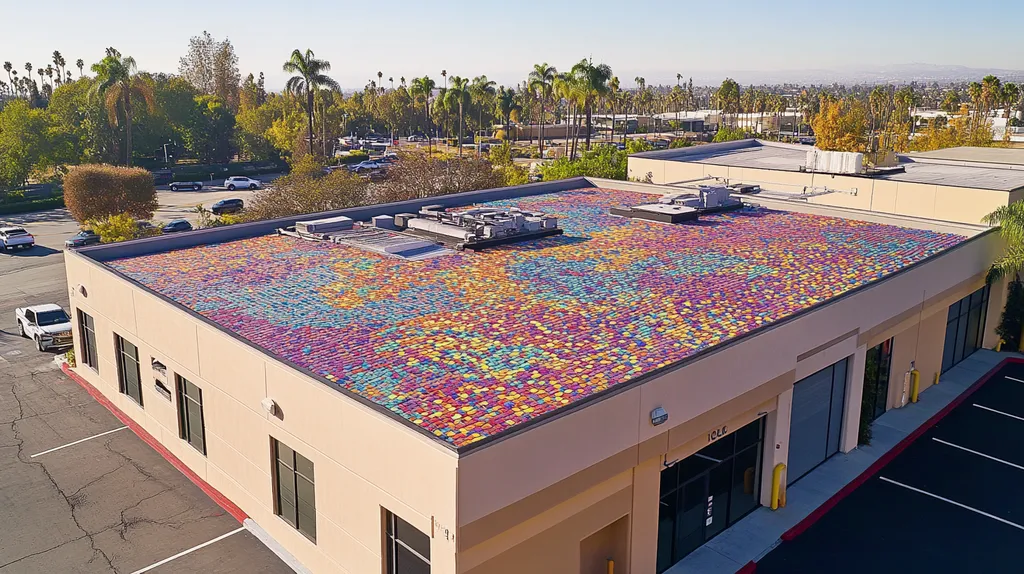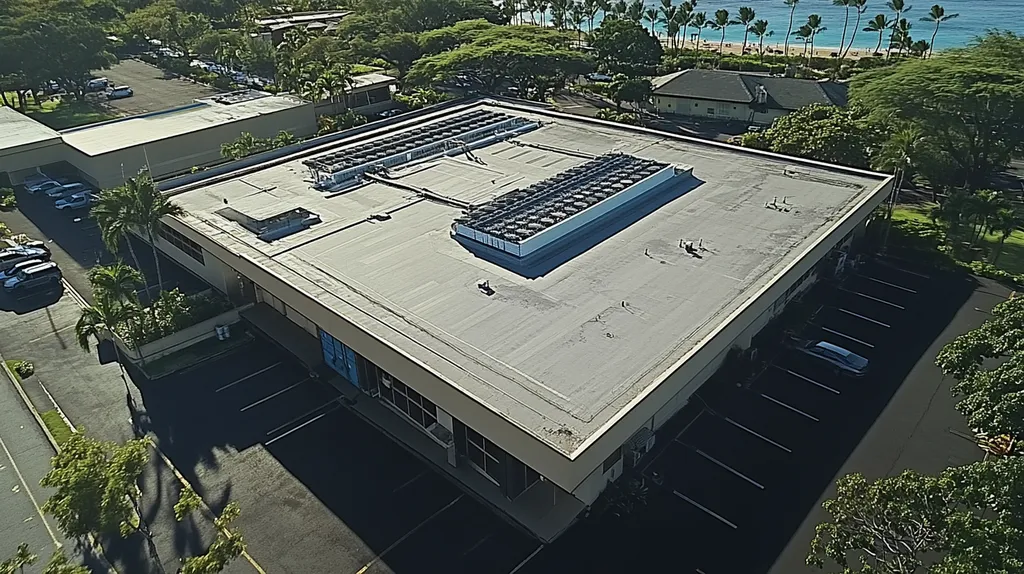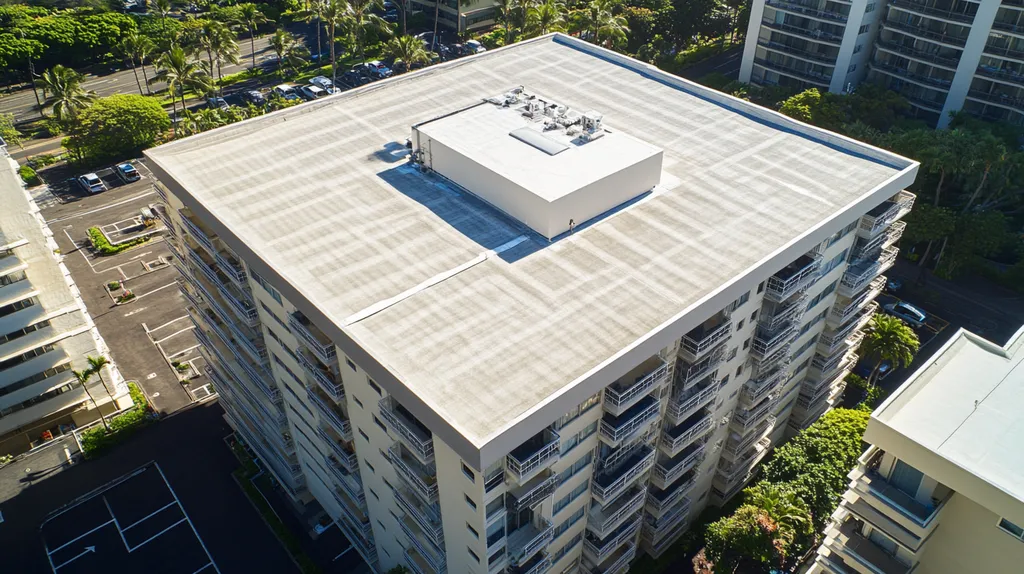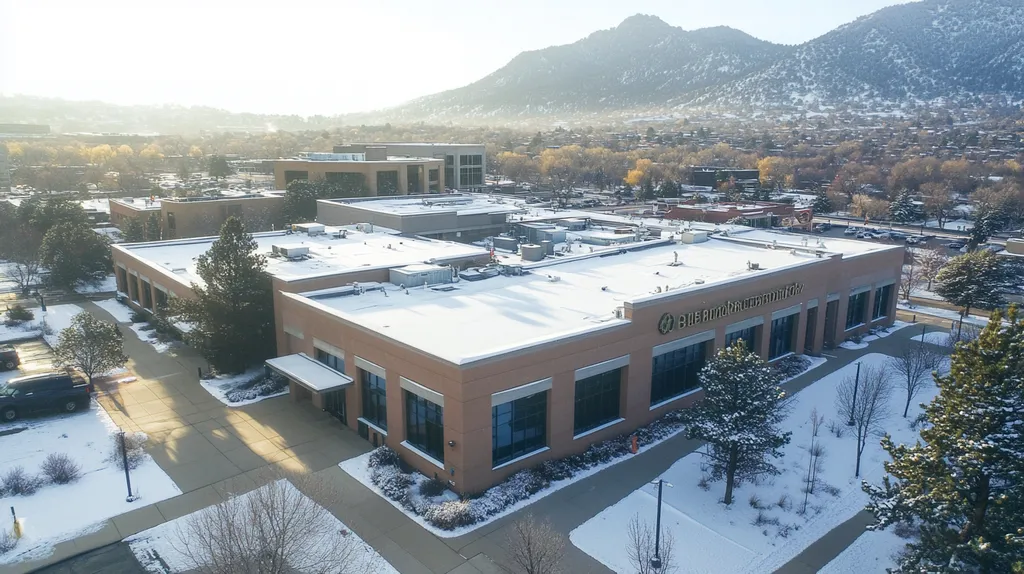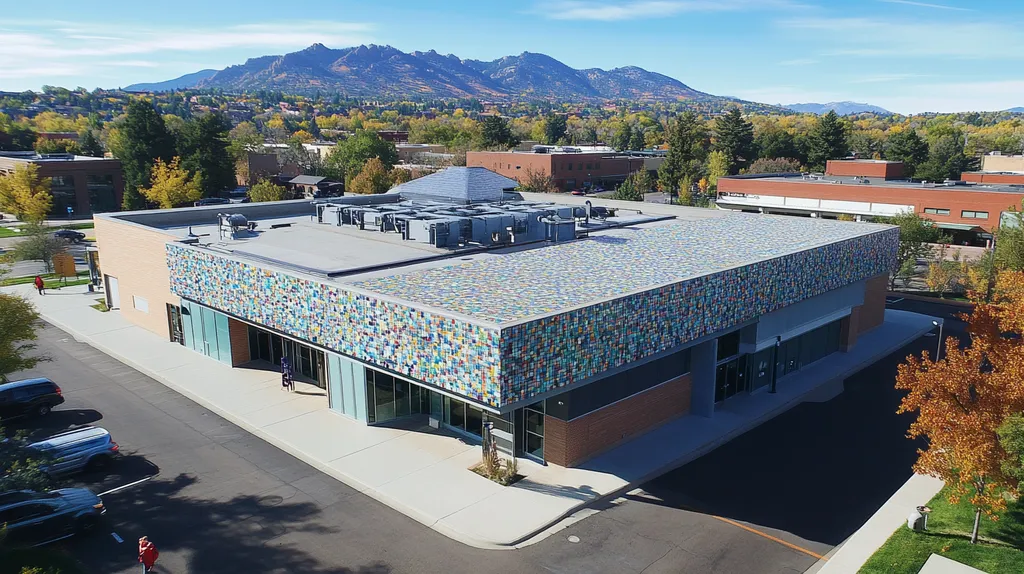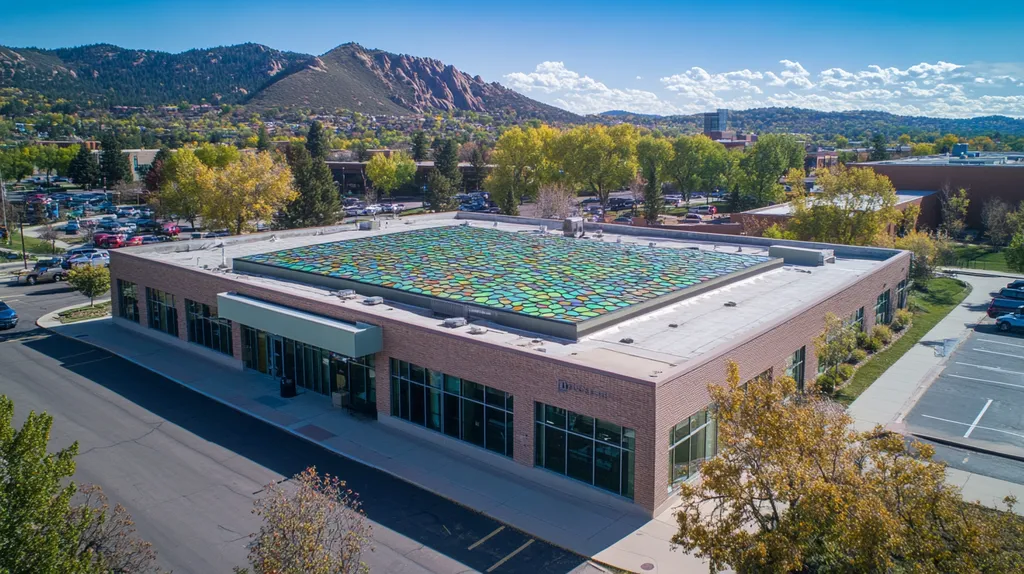In an era where extreme weather events have increased by 30% over the past decade, industrial roofing faces unprecedented challenges that put billions in assets at risk.
From UV degradation to thermal shock, modern weather patterns subject commercial roofs to stresses that traditional designs never anticipated. Studies show that 40% of industrial roof failures stem directly from misconceptions about weather resistance.
This comprehensive analysis separates roofing facts from fiction, examining how weather truly impacts industrial roof durability and what facility managers can do to protect their investments.
SECTION 1: COMMON MISCONCEPTIONS
When it comes to industrial roofing, misconceptions can cost facility managers millions in premature replacements and emergency repairs. Studies show that 40% of commercial roof failures stem directly from misunderstandings about weather resistance and material capabilities. Like an invisible saboteur, these myths silently undermine even the most diligent maintenance programs.
Let’s demolish three pervasive roofing myths that continue to plague industrial building management. Understanding the truth behind these misconceptions can mean the difference between a roof that lasts decades and one that fails prematurely.
Myth: All Roofing Materials Have Equal Weather Resistance
This dangerous assumption leads many facility managers to prioritize initial cost over performance characteristics. The reality is that weather resistance varies dramatically between roofing systems, with some materials offering significantly more protection than others.
While moderate winds between 86-110 mph can severely damage traditional asphalt roofing, properly installed metal roof systems can withstand winds up to 140 mph. (source: LBM Journal)
Different climates demand different solutions. Desert environments require materials with superior UV resistance, while coastal locations need systems that can withstand salt spray and high humidity.
Choosing the wrong material for your climate zone isn’t just inefficient – it’s like bringing a umbrella to a hurricane. The right material choice can double or triple a roof’s effective lifespan.
Misbelief That Metal Roofs Are Noisy During Storms
The persistent myth of the “noisy metal roof” keeps many facility managers from considering this durable option. This outdated perception stems from memories of old barns and sheds with direct-deck metal roofing.
Modern commercial metal roofing systems incorporate sophisticated insulation layers and sound-dampening technology. When properly installed, these systems often produce less noise than traditional built-up roofing during storms.
The reality is that today’s metal roofs combine superior weather resistance with excellent acoustic properties. The combination of structural decking, insulation, and engineered attachment systems creates a remarkably quiet interior environment.
False Assumption That Flat Roofs Are Inherently Leak-Prone
The notion that flat roofs automatically mean water problems reveals a fundamental misunderstanding of modern commercial roofing design. Today’s flat roof systems are engineering marvels that actively manage water through carefully calculated slope and drainage patterns.
Contemporary single-ply membranes and built-up systems create virtually impenetrable barriers when properly installed. The key lies in understanding that “flat” roofs actually incorporate subtle slopes – typically 1/4 inch per foot – to direct water toward strategic drainage points.
Regular maintenance remains crucial, but modern flat roofs are remarkably resilient. With proper design and installation, these systems can outperform many pitched roofs in terms of weather resistance and longevity.
The real risk comes not from the roof design itself, but from cutting corners on materials or installation. A properly specified and installed flat roof system can provide decades of reliable service.
SECTION 2: PRACTICAL IMPLICATIONS
When Mother Nature sends her worst, your industrial roof becomes your building’s first and last line of defense. Every year, weather-related roof damage costs U.S. businesses over $1.5 billion in repairs and lost productivity. Yet many facilities continue gambling with inappropriate materials and inadequate maintenance, treating their roofs like disposable umbrellas rather than critical infrastructure investments.
Influence of Weather on Roof Material Selection and Longevity
Climate change has fundamentally altered the durability equation for industrial roofs. Modern roofing materials must now withstand more extreme temperature swings, increased storm intensity, and unprecedented weather patterns. (source: Aerial Estimation Blog)
Material selection has evolved from a simple cost calculation into a complex risk assessment. While traditional built-up roofing might suffice in moderate climates, facilities in severe weather zones require specialized solutions like impact-resistant membranes or reinforced metal systems.
The stakes of material selection extend far beyond the roof itself. A compromised industrial roof can trigger a cascade of failures – from structural damage to inventory loss, equipment destruction, and business interruption.
Smart material choices must account for both current conditions and projected climate trends. What worked reliably twenty years ago may prove dangerously inadequate in today’s more volatile weather patterns.
Impact of Installation Quality on Weather Durability
Even the most weather-resistant materials become vulnerable when installed improperly. Like a chain’s weakest link, a single installation flaw can compromise an entire roofing system’s integrity during severe weather.
Critical details like proper membrane tensioning, seam welding temperatures, and fastener patterns make the difference between a roof that survives decades and one that fails in its first storm. These technical nuances demand installation crews with both expertise and accountability.
The rush to cut costs during installation often backfires spectacularly. While premium installation might add 15-20% to initial costs, it typically delivers 50-100% longer service life under challenging weather conditions.
Weather testing during installation provides crucial quality assurance. Techniques like flood testing and infrared scanning can identify potential weak points before they’re exposed to actual storms.
Importance of Maintenance for Extending Industrial Roof Life
Regular maintenance transforms from an expense into an investment when viewed through the lens of weather resilience. Each inspection creates an opportunity to address minor issues before they become major vulnerabilities.
Strategic maintenance timing proves especially crucial. Spring inspections can identify winter damage, while fall maintenance ensures drainage systems can handle upcoming snow loads and ice dams.
Documentation becomes your roof’s weather insurance policy. Detailed maintenance records not only guide future repairs but also protect warranty coverage when weather damage occurs.
The most successful maintenance programs treat industrial roofs as dynamic systems rather than static structures. This includes regular updates to drainage patterns, expansion joint maintenance, and adaptation of flashings to changing conditions.
Emergency response planning must integrate with routine maintenance. Having repair materials and qualified contractors pre-positioned can minimize damage when severe weather strikes.
SECTION 3: COST OF MISINFORMATION
In the high-stakes game of industrial roofing, misinformation isn’t just inconvenient – it’s expensive. Every year, facility managers watch millions of dollars literally vanish into thin air through poorly chosen materials, deferred maintenance, and misguided “cost-saving” measures. Like a leaky boat taking on water, these decisions create a cascade of expenses that overwhelm even the most robust maintenance budgets.
Financial Risks from Choosing Inadequate Weather-Resistant Materials
UV rays, temperature swings, and moisture intrusion form a relentless assault team against industrial roofs, degrading materials through cracks, blistering, and loss of elasticity. What starts as minor material compromise can quickly escalate into catastrophic failure. (source: Castagra Commercial Roofing Blog)
The true cost of inadequate materials often lurks beneath the surface. While premium weather-resistant solutions might command a 20-30% price premium upfront, they typically deliver 200-300% longer service life under challenging conditions.
Material substitutions create a dangerous domino effect. When one component fails prematurely, it stresses adjacent systems, accelerating deterioration across the entire roof assembly.
Insurance carriers have caught on to this false economy. Many now adjust premiums based on material choices, turning supposedly “budget-friendly” options into long-term financial burdens.
Hidden Costs of Frequent Repairs Due to Weather Damage
The repair spiral starts innocently enough – a small leak here, a loose seam there. But like compound interest working in reverse, each repair cycle adds to both immediate costs and future vulnerability.
Business interruption expenses often dwarf direct repair costs. When production lines shut down or inventory gets damaged, the financial impact can be ten times the cost of the actual roof repair.
Emergency repairs command premium pricing, sometimes double or triple standard rates. Yet many facilities find themselves trapped in this expensive cycle, unable to break free without significant capital investment.
The reputation cost proves equally damaging. Tenants and customers quickly lose confidence in facilities plagued by persistent roof issues, leading to reduced occupancy rates and lost business opportunities.
Expense of Ignoring Roof Inspection and Verification Protocols
Skipping routine inspections is like driving blindfolded – you might save time initially, but the eventual crash proves catastrophic. Regular evaluations catch problems while they’re still affordable to fix.
Documentation gaps create warranty nightmares. Manufacturers increasingly require proof of regular inspections to maintain coverage, turning maintenance oversights into costly self-insurance scenarios.
The most expensive inspection is the one never performed. Small issues spotted during routine checks might cost hundreds to repair, while hidden problems can mushroom into six-figure emergencies.
Smart facility managers recognize that inspection costs represent insurance against much larger expenses. A thorough evaluation program typically costs less than 1% of roof replacement value annually while extending service life by 25-40%.
SECTION 4: REALITY CHECK
When Mother Nature flexes her muscles, industrial roofs reveal their true character – for better or worse. While marketing brochures promise decades of worry-free protection, the harsh reality of extreme weather exposes every shortcut and compromise. Understanding actual performance metrics isn’t just academic – it’s the difference between a roof that shields your facility and one that surrenders to the elements.
Actual Performance of Metal Roofs in Harsh Weather Conditions
UV rays, thermal cycling, and moisture create a relentless assault on roofing materials, with exposure effects ranging from surface degradation to structural compromise. Even premium materials face accelerated aging when subjected to extreme temperature swings and intense sunlight. (source: Castagra Commercial Roofing Blog)
Metal roofing systems demonstrate remarkable resilience when properly specified and installed. Modern standing seam designs can maintain watertight integrity even under hurricane-force winds, while their reflective surfaces minimize heat absorption and UV damage.
However, installation quality determines real-world performance. Proper panel alignment, appropriate fastener patterns, and correct seam construction make the difference between a 50-year roof and a 5-year headache.
Regional weather patterns demand specialized solutions. Coastal installations require enhanced corrosion protection, while snow-belt locations need reinforced structural support and sophisticated ice management systems.
True Lifespan Expectations for Various Commercial Roofing Materials
Single-ply membranes typically deliver 20-25 years of service in moderate climates, but harsh conditions can cut that lifespan by 40%. Regular maintenance and proper installation can extend performance, but eventually, UV exposure and thermal stress take their toll.
Built-up roofing systems offer 25-30 year lifespans when maintained properly. Their multi-layer construction provides redundant protection, though this same complexity makes repairs more challenging when problems develop.
Modified bitumen solutions bridge the gap between traditional built-up and modern single-ply systems. With proper maintenance, these hybrid systems can provide 20-30 years of reliable service while offering excellent puncture resistance.
Metal roofing remains the longevity champion, regularly delivering 40-50 years of service. The key lies in proper material selection – architectural-grade systems significantly outperform light-gauge alternatives in severe weather conditions.
Verification of Weather-Related Roof Failure Causes
Post-failure analysis reveals that weather damage often exploits pre-existing vulnerabilities. Poor drainage design, inadequate slope, and improper flashing details create weak points that storms readily attack.
Wind damage patterns tell revealing stories. While dramatic tear-offs grab headlines, most wind-related failures start with minor edge detail compromises that progressive storms gradually exploit.
Water infiltration rarely follows a direct path. What appears as a leak in one location often originates from a compromise point several feet or even yards away, making accurate diagnosis crucial for effective repairs.
The most insidious failures develop slowly over time. Repeated thermal cycling, minor wind stress, and accumulated moisture work together to degrade materials and connections until a single severe weather event triggers catastrophic failure.
SECTION 5: EVIDENCE-BASED ALTERNATIVES
As weather patterns intensify, industrial roofing faces unprecedented challenges. Traditional solutions crumble while innovative approaches prove their worth through measurable performance gains. With extreme weather events increasing 30% in the last decade, facility managers can no longer afford to gamble on unproven solutions or dated technology. The stakes? Millions in potential damage, business interruption, and premature replacement costs.
Durable Roofing Systems Designed for Specific Weather Challenges
UV rays, thermal cycling, and moisture relentlessly attack roofing materials, causing degradation through cracks, blistering, and loss of elasticity. High temperatures trigger expansion and contraction cycles that steadily weaken roof structures, while rain and snow add crushing loads that exploit every vulnerability. (source: Castagra Commercial Roofing Blog)
Modern engineered solutions tackle these challenges head-on through specialized material combinations. Multi-layer systems incorporate UV-resistant top sheets, moisture-blocking intermediate layers, and structural support bases that work together to neutralize specific environmental threats.
Smart drainage design has evolved beyond simple slope calculations into sophisticated water management systems. These integrate primary and secondary drainage paths with overflow protection to handle both typical rainfall and extreme weather events.
Regional customization proves crucial for long-term performance. Coastal installations demand enhanced corrosion resistance, while snow-belt locations require reinforced load capacity and sophisticated ice dam prevention.
Benefits of Custom-Fabricated Roof Membranes in Industrial Settings
Factory-fabricated membrane systems eliminate up to 85% of field seams – the most common point of failure in traditional installations. These precision-manufactured solutions arrive sized specifically for each building’s unique geometry.
Advanced polymer formulations deliver flexibility without sacrificing durability. This allows membranes to accommodate building movement while maintaining watertight integrity under extreme conditions.
Integration of reinforcement layers at predetermined stress points provides targeted strength where it matters most. This engineered approach prevents the membrane stretching and fatigue that plague conventional systems.
Quality control improvements through factory fabrication translate directly into field performance. Controlled manufacturing environments ensure consistent material properties and seam strength that field fabrication simply cannot match.
Energy Efficiency and Weather Resilience Innovations in Roofing
Smart roofing systems now combine weather protection with energy management through innovative material science. Thermochromic surfaces automatically adjust their reflectivity based on temperature, optimizing both summer cooling and winter heat retention.
Integrated sensor networks provide real-time performance monitoring and early warning of developing issues. This predictive capability allows facility managers to address small problems before they become expensive emergencies.
Advanced insulation systems deliver both thermal efficiency and structural reinforcement. New composite materials provide superior R-values while adding rigidity that helps roofs resist wind uplift and point loading.
Green roof technologies transform traditional liability surfaces into productive assets. Beyond managing stormwater and reducing heat island effects, these systems extend roof membrane life by protecting them from UV exposure and temperature extremes.
SECTION 6: TEST AND VERIFY
Like a doctor’s diagnostic tools revealing hidden health issues, modern roof testing equipment exposes vulnerabilities before they become catastrophic failures. Every year, undetected roofing problems drain billions from industrial facility budgets – not just in repair costs, but in damaged inventory, interrupted operations, and shortened roof lifespans. Without rigorous testing and verification, even premium roofing materials can fail prematurely, leaving buildings exposed to nature’s most punishing elements.
Roof Condition Assessment Techniques Including Infrared and Moisture Testing
UV rays, thermal cycling, and moisture create a relentless assault on roofing materials, causing degradation through cracks, blistering, and loss of elasticity. High temperatures trigger expansion and contraction cycles that steadily weaken roof structures, while water infiltration exploits every vulnerability. (source: Castagra Commercial Roofing Blog)
Modern infrared scanning technology cuts through the guesswork by creating detailed thermal maps of moisture intrusion. These sophisticated tools can detect problems months or even years before they become visible to the naked eye.
Nuclear moisture meters and capacitance testing provide precise measurements of water content within roofing materials. This quantitative data helps facility managers make informed decisions about repair timing and scope.
Core sampling, while more invasive, delivers definitive evidence of material condition and system composition. Strategic sampling locations provide crucial insights without compromising roof integrity.
Best Practices for Monitoring Weather-Related Roof Degradation
Smart monitoring starts with establishing clear baseline conditions through detailed documentation. High-resolution photography and precise measurements create reference points for tracking degradation over time.
Weather stations mounted directly on roofs provide facility-specific data about temperature swings, rainfall intensity, and wind patterns. This localized information proves far more valuable than general weather reports.
Automated monitoring systems use embedded sensors to track membrane movement, structural deflection, and moisture levels in real-time. Early warning alerts help prevent small issues from becoming major failures.
Strategic inspection timing maximizes monitoring effectiveness. Dawn inspections reveal nighttime condensation issues, while afternoon checks catch thermal-related problems at their peak.
Verification Methods to Confirm Roof Installation and Material Integrity
Electronic leak detection systems use low-voltage current to pinpoint breaches in roofing membranes with remarkable precision. This non-destructive testing method can verify watertight integrity across entire roof sections.
Pull-testing of mechanical fasteners confirms proper attachment strength against wind uplift forces. Sample testing across different roof zones ensures consistent installation quality.
Seam probing and cut-test verification check weld integrity in thermoplastic membranes. These targeted inspections validate both material fusion and workmanship quality.
Documentation plays a crucial role in verification. Detailed installation records, material testing reports, and quality control checkpoints create an audit trail that protects warranty coverage and guides future maintenance.
The Bottom Line
With weather-related roof damage costing industries over $3.5 billion annually, the need for evidence-based roofing decisions has never been more critical.
The days of treating industrial roofs as simple overhead barriers are gone, replaced by the imperative for sophisticated weather-management systems that actively protect billions in assets.
Smart material selection, professional installation, and rigorous testing protocols aren’t luxuries – they’re essential safeguards against increasingly volatile weather patterns.
While premium solutions may command 20-30% higher initial investments, they typically deliver 200-300% longer service life under severe conditions.
The choice is clear: embrace proven roofing strategies now, or pay exponentially more for emergency repairs and premature replacements later.
FREQUENTLY ASKED QUESTIONS
Q. What are the common misconceptions about industrial roofs?
A. Many believe all roofing materials resist weather equally, which is misleading. The truth is that performance varies widely, with some options suffering in severe conditions. Choosing the right type can save you from costly premature failures.
Q. How does weather influence the lifespan of a commercial roof?
A. Severe weather strains roofs more than mild climates. Increased temperatures, heavy rainfall, and intense storms can shorten lifespan significantly. Proper selection of materials and installation practices can mitigate these weather impacts and ensure durability.
Q. What financial risks come from using poor weather-resistant materials?
A. Using inadequate materials can trigger unexpected repair costs and operational disruptions. Over time, what seems like a savings can morph into hidden expenses, making poor choices financially reckless and ultimately leading to larger budget drains.
Q. How does installation quality affect the durability of industrial roofs?
A. Improper installation can undermine even the best roofing materials. Small errors during setup may lead to significant vulnerabilities during storms. Investing in experienced installation crews can substantially enhance longevity and performance, minimizing long-term risks.
Q. What innovative roof systems exist for extreme weather challenges?
A. New systems combine advanced materials to resist harsh conditions. Multi-layer designs with moisture barriers and tailored support can withstand intense weather events. Facility managers should consider these solutions to safeguard their investments and prolong roof lifespan.
Q. How can facility managers monitor roof deterioration over time?
A. Regular inspections and advanced technology like thermal imaging can identify issues early. Automated monitoring systems track real-time conditions, alerting managers to problems before they become serious. Consistent evaluation ensures roofs remain resilient against unpredictable weather.
Q. What types of membranes are best for industrial roofs?
A. Custom-fabricated membranes tailored for specific building designs excel in performance. These systems minimize seams, enhancing watertight integrity while ensuring flexibility. Selecting the proper membrane based on application can dramatically improve durability and maintenance ease.

